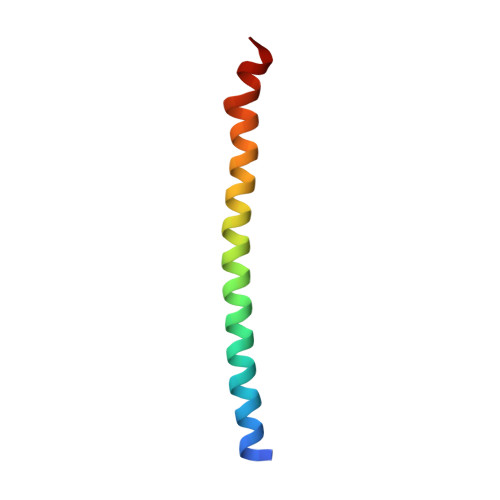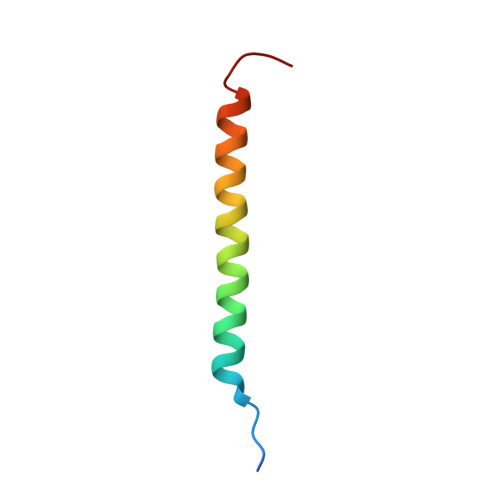Structural characterization of the human respiratory syncytial virus fusion protein core.
Zhao, X., Singh, M., Malashkevich, V.N., Kim, P.S.(2000) Proc Natl Acad Sci U S A 97: 14172-14177
- PubMed: 11106388
- DOI: https://doi.org/10.1073/pnas.260499197
- Primary Citation of Related Structures:
1G2C - PubMed Abstract:
Human respiratory syncytial virus (HRSV) is a major cause of a number of severe respiratory diseases, including bronchiolitis and pneumonia, in infants and young children. The HRSV F protein, a glycoprotein essential for viral entry, is a primary target for vaccine and drug development. Two heptad-repeat regions within the HRSV F sequence were predicted by the computer program learncoil-vmf. These regions are thought to form trimer-of-hairpins-like structures, similar to those found in the fusion proteins of several enveloped viruses. The hairpin structure likely brings the viral and cellular membranes into close apposition, thereby facilitating membrane fusion and subsequent viral entry. Here, we show that peptides, denoted HR-N and HR-C, corresponding to the heptad-repeat regions from the N-terminal and C-terminal segments of the HRSV F protein, respectively, form a stable alpha-helical trimer of heterodimers. The HRSV N/C complex was crystallized and its x-ray structure was determined at 2.3-A resolution. As anticipated, the complex is a six-helix bundle in which the HR-N peptides form a three-stranded, central coiled coil, and the HR-C peptides pack in an antiparallel manner into hydrophobic grooves on the coiled-coil surface. There is remarkable structural similarity between the HRSV N/C complex and the fusion protein core of other viruses, including HIV-1 gp41. In addition, earlier work has shown that HRSV HR-C peptides, like the HIV-1 gp41 C peptides, inhibit viral infection. Thus, drug discovery and vaccine development strategies aimed at inhibiting viral entry by blocking hairpin formation may be applied to the inhibition of HRSV.
Organizational Affiliation:
Howard Hughes Medical Institute, Whitehead Institute for Biomedical Research, Department of Biology, Massachusetts Institute of Technology, Nine Cambridge Center, Cambridge, MA 02142, USA.















